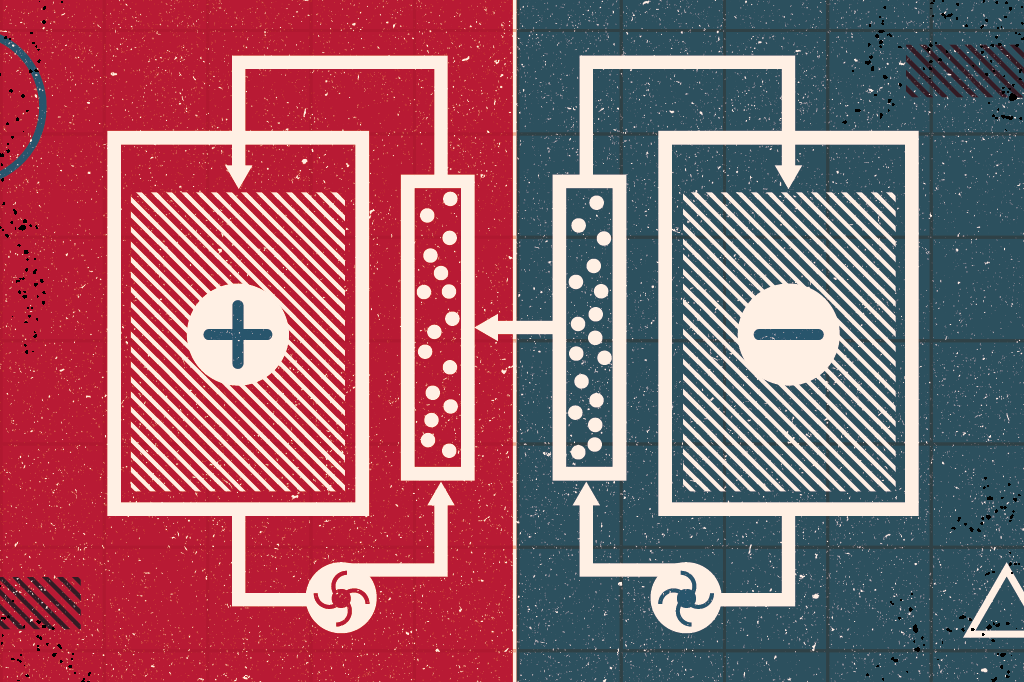The Story In Brief
Ellen Williams is Distinguished University Professor in the Department of Physics at the University of Maryland and is a member of EPRI’s Advisory Council. From 2014 to 2017, she served as director of the U.S. Department of Energy’s Advanced Research Projects Agency-Energy (ARPA-E). Williams speaks with EPRI Journal about technology innovation in the electric power industry—recent accomplishments, challenges ahead, and the role of entrepreneurs, power companies, and government.

EJ: What was your favorite part about being the director of ARPA-E?
Williams: People frequently say that being at ARPA-E is the best job in Washington, and I couldn’t argue with that at all. It’s exciting to be around so many high-powered, technical people with great ideas and great depths of understanding about the energy field. ARPA-E is also an agency that has a great sense of comradery, purpose, and urgency in empowering innovation to improve the energy system.
EJ: Looking at technology development in the electric power sector today, which potentially transformative technologies warrant greater emphasis and support?
Williams: Managing the grid for variable load presents many potentially transformative opportunities for enabling technologies—switching hardware, measurement software and hardware, demand response, energy storage, and distributed generation, to name a few. All these different components are coming together to augment the capabilities of our future grid.
In advancing technologies, we often discuss what’s called the learning curve, which basically means that performance improves and costs go down as a technology is used more. As part of that learning curve, innovation, research and development, and fine-tuning of technologies play an important role. When you have a complex technological system like electric power, improvements in the many different components of the system contribute to improve the overall learning curve.
EJ: What recent technological innovations for electric power serve as models for future innovation?
Williams: The large-scale deployment of synchrophasors was a tremendous breakthrough, enabling precisely timed grid measurements of current, voltage, frequency, and phase. Now, universities, entrepreneurs, and big companies are responding to this opportunity by creating new approaches to managing the electric power grid. These include tools to analyze synchrophasor data in real-time, detect grid events, and monitor distribution feeders with high solar penetration. That’s an important model for technology innovation. Once there is a new enabling capability, people will rally around in Edisonian fashion and drive innovation forward.
A second example is the development of low-cost flow batteries. These have been around for a long time as an expensive niche product. In the last 10 to 15 years, researchers have solved some fundamental technical challenges in making a flow battery work effectively—getting chemicals to interact effectively with the electrodes. Now we have many companies taking that enabling breakthrough and driving down the cost of flow batteries.
EJ: Over the next five years, do you expect flow batteries to be competitive with lithium ion batteries for grid applications?
Williams: There’s a conundrum here. The existing lithium ion battery technology already has a large manufacturing scale and an existing infrastructure for service and components. A purchaser who’s looking to put something in place right now may well choose a lithium ion battery system. Lithium ion can work for some applications on the electric power grid, but ultimately in terms of cost and performance, it won’t get us where we need to be with respect to cycle life and cost for large-scale grid storage. There’s no doubt in my mind that flow batteries can get us at least to the 4- to 5-hour storage time frame that we need to solve a lot of problems on the grid. But they still need demonstration and deployment time to get there. Technically, it easily could happen in 5 to 10 years, but there needs to be a first market for the product so that the learning curve can develop.
EJ: What challenges and gaps need to be addressed for momentum in innovation?
Williams: The hardest thing for a new technology is finding those first markets to generate early revenue. This is a big challenge in the power industry because electric power is an essential service. Power companies have to be very conservative about what they put in their system. They have to be sure that a new technology won’t disrupt power delivery. As a result, getting a new technology into the system requires a lot of prior demonstration, so that when it goes online it’s certain to be reliable and effective.
The other challenge is the regulatory complexity of the power system. Effective technical solutions can run into regulatory hurdles, and this is outside the comfort zone of most technology developers. More engagement among utilities, EPRI, other R&D organizations, policymakers, and politicians is needed so that the regulatory system can accommodate new technologies that improve grid reliability and responsiveness. There’s nothing simple about this. It requires people who understand the interface of technology, policy, and regulation.
EJ: What can power companies do to facilitate innovation?
Williams: Organizations such as EPRI can provide the industry with information and support for using new technical opportunities. In addition, utilities can speed adoption of new technologies by using advanced grid modeling and simulation to characterize and demonstrate how they work. Today’s advanced computation and analytics are now far more powerful than what was available even 10 years ago, so there is room for significant progress. Utilities also can identify ways to field-test grid technologies under conditions where they can control the risk and make sure their customers are well-supported.
Power companies can stimulate innovation. Innovators will respond to a perceived challenge or opportunity. By clearly stating what is needed to improve their system without being prescriptive about the exact pathway to get there, utilities can create an incentive for innovators to come up with new ideas.
One approach could be for the electric power industry to hold prize competitions, such as XPRIZE. Given a well-defined question, it’s a great way to pull innovators in and get them engaged with the problems that need to be addressed.
EJ: What are appropriate roles for government and policy?
Williams: There’s an important role for government and policy at all stages of technical readiness, but especially in the very early stages and the transitional stage—when early-stage ideas are being advanced into a format that a private-sector investor would consider funding. That is a very difficult transition that government should continue to support. ARPA-E supports it and “angel investors” support it.
Often, early-stage technologies are more expensive or need time to move down the learning curve, so government can create a pull in the system—for example, a regulation that says we must have this level of energy efficiency or we must have this much energy storage. Effective government policy would enable the significant capital investments needed for modernizing the electric power system.
Government policy is also required in dealing with externalities such as climate change. In modernizing the electric power system, good policy can facilitate a power system that is as clean as possible now and capable of becoming as clean as we need it to be in the future.
EJ: How should the electric power industry prepare for a more electrified future?
Williams: In preparing for a more electrified future, the electric power industry should not view the future grid as a bigger version of what it is now. We’re going to need more electric power delivered at lower cost, environmental impact, and scale of generation capacity.
The issue of capacity is quite interesting. Because of variable demand, today’s global electricity generation capacity is about two times the amount of electricity used. The future grid should improve that ratio. The future grid may produce and deliver a lot more electricity, but it needn’t scale up the amount of transmission and distribution by a proportional amount. Advances in technologies for grid management, energy storage, distributed generation, and demand response will help address this goal.
EJ: What’s the system going to look like 15 years from now?
Williams: I can’t predict the future, so I’ll tell you what I’d like the electric power system to look like 15 years from now. There will be a lot more demand for electricity as we electrify a lot more things in our society, including vehicles and industrial processes. It will deliver more electricity, but by integrating many different types of power sources, it will have much lower carbon emissions. It will operate in a more distributed fashion and provide customers with much more choice in how they obtain and use electrical power.
Additional Resources:
- How Synchrophasors Are Bringing the Grid into the 21st Century
- ARPA-E: The First Seven Years—A Sampling of Project Outcomes (see page 109, “ARPA-E Challenges What’s Possible: Stationary (Grid) Energy Storage”)
Artwork by James Provost





